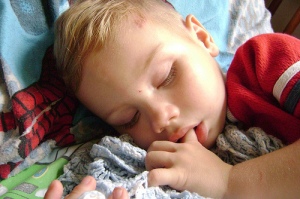NOTEWORTHY WEDNESDAY!
Every now and then I write about SIDS (Sudden Infant Death Syndrome).
It is frightening for parents to even think about this happening but there are American Academy of Pediatrics‘ recommendations to follow to lessen the risk of SIDS .
SIDS is considered by some professionals to be a disease. Here is what Norman Lewak, Clinical Professor of Pediatrics at UCSF … had to say:
SIDS is a real disease. The “Triple Risk Model for SIDS is described in the Technical Report that accompanies the Policy Statement on-line edition only. Thanks to the work of Hannah Kinney of Boston Childrens, we know that SIDS infants have lesions in the respiratory center of the brainstem. This is the first risk pre-exiting respiratory center lesion. The second risk is the vulnerable developmental age, peaking at 2-4 months, in which CNS respiratory control changes. The third risk is an “environmental trigger“–an environmental event that blocks continued respiratory activity.This trigger appears to many of us to be deep sleep brought on by increased comfort from increased warmth. Prone sleep has been proven to increase warmth. The pacifier effect is most likely caused by an increase in activity, thus a lighter sleep.http://pediatrics.aappublications.org/content/early/2011/10/12/peds.2011-2284/reply#content-block
Some AAP recommendations to prevent SIDS are:
- supine sleeping position
- a firm sleep surface
- breastfeeding
- room sharing without bed sharing
- consider using a pacifier which leads to a lighter sleep
- avoid soft bedding
- avoid overheating of the room where baby sleeps
- avoid exposure tobacco smoke, alcohol and illicit drugs
According to recent information, SIDS a disease which can be triggered by other environmental factors such as sleeping on soft surfaces, or stomach sleeping. These situations can set off a reaction whereby an infant ceases breathing due to an abnormal increase in his/her CO2 level. SIDS is not “suffocation”.
Every parent-to-be should be given information about SIDS prior to delivery and any questions should be answered by nurses or pediatricians early in the newborn period.
It is easier to follow sleeping guidelines when they are explained and make sense as to why they are important and how they can make a difference in the prevention of SIDS. Of course unfortunately, there are never any guarantees but parents can do their best with the knowledge that they have to prevent a tragedy.
There is so much to being a parent … children are precious… we are their protectors…just as we use car seats to protect them in the car we should protect them when we put them to sleep.
SIDS is down, but back-sleeping is just part of the message – USATODAY.com.
http://pediatrics.aappublications.org/content/128/5/e1341.full
Related posts:
SIDS…Sudden Infant Death Syndrome
